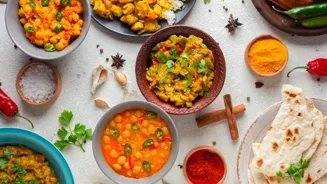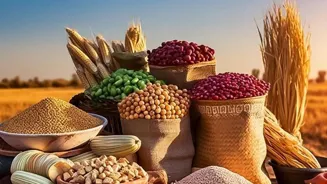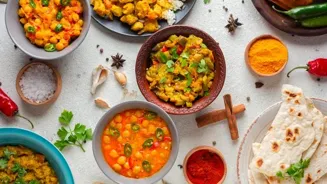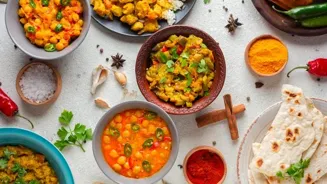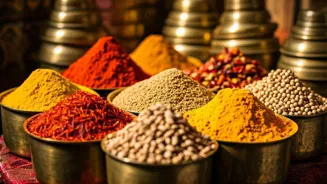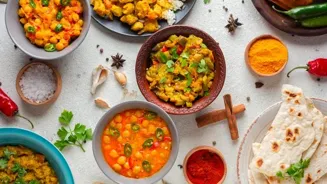Unveiling the Essence of Rice in Indian Culture - Dive into the rich tapestry of history, tradition, and flavors
Rice, more than just a staple, is the very lifeblood of Indian cuisine and culture. From
the snow-capped Himalayas to the tropical coasts of Kerala, rice cultivation and consumption are woven into the fabric of daily life.
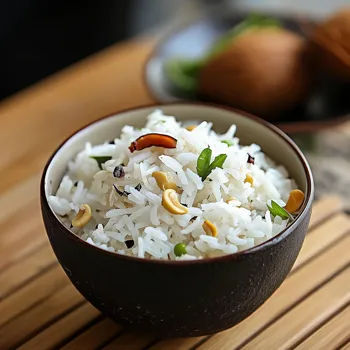
It's a grain steeped in history, religion, and tradition, playing a vital role in everything from everyday meals to elaborate ceremonies. For many Indians, a meal isn't complete without rice. It provides sustenance, comfort, and a connection to their heritage.
Across the country, diverse varieties of rice are grown, each with its unique flavor, texture, and aroma, reflecting the diverse landscapes and culinary traditions of India.
Rice cultivation in ancient India shaped society and culture
The story of rice cultivation in India dates back millennia. Archaeological evidence suggests rice farming in the Indian subcontinent as early as 7000 BC.
Over centuries, farmers developed sophisticated irrigation systems and techniques to cultivate rice in diverse terrains, including the fertile plains of the Ganges and Brahmaputra rivers.
This agricultural prowess not only ensured food security but also shaped the social and economic structures of Indian society. Rice became integral to religious practices, with offerings of rice grains made to deities during rituals and festivals.
It symbolizes prosperity, abundance and is considered sacred in many communities.
Rice holds cultural significance in Indian mythology and rituals
Rice appears prominently in Indian mythology and folklore. Many Hindu deities, like Lakshmi, the goddess of wealth and prosperity, are associated with rice. During weddings, throwing rice grains is a common ritual, symbolizing blessings of abundance and fertility for the newlyweds.
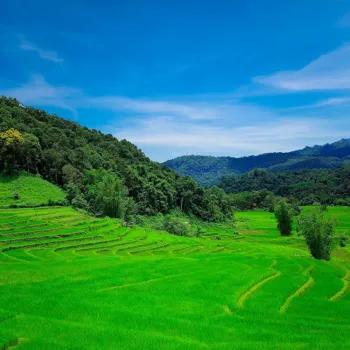
In some communities, rice is the first solid food given to a baby, marking the start of their journey into the world. The importance of rice extends beyond mere sustenance; it is a cultural symbol deeply embedded in the Indian psyche.
The planting and harvesting of rice are celebrated with colourful festivals, reflecting the close relationship between the people and this essential grain.
Rice's versatility in Indian cuisine shines in varied dishes and cooking techniques
The versatility of rice in Indian cuisine is astounding. From the simple comfort of steamed rice eaten with dal to the elaborate biryanis and pulaos, rice is the star in countless dishes. In South India, rice is ground into flour to make dosas, idlis, and appams, breakfast staples enjoyed daily.
In West Bengal, rice is a key ingredient in desserts like payesh, a creamy rice pudding. Every region boasts unique rice-based preparations, reflecting the local ingredients and culinary traditions.
The techniques used to cook rice are also diverse, from boiling and steaming to frying and fermenting, each imparting a different flavour and texture to the final dish.
India's diverse rice varieties enhance its rich cuisine
Various types of rice are grown across India, each with its own unique characteristics. Basmati rice, known for its long grains and fragrant aroma, is a prized variety often used in biryanis and pulaos. Sona Masuri rice, a lighter, more everyday variety, is popular in South India.
Govindbhog rice, a short-grained aromatic rice from West Bengal, is traditionally used to make sweets. Red rice, with its nutty flavour and high nutritional value, is gaining popularity as a healthy alternative.
The diverse range of rice varieties adds to the richness and complexity of Indian cuisine.
Rice in Indian society: symbol of sharing, community spirit, and tradition
The role of rice extends beyond the plate and into the heart of Indian society. It is a symbol of hospitality and generosity, with the act of sharing a meal of rice being a sign of friendship and goodwill.

During festivals and celebrations, rice is often distributed among the poor and needy, reflecting the importance of sharing and community spirit. Rice is also used to make traditional beverages like rice beer, an integral part of social gatherings in some communities.
From the mundane to the sacred, rice permeates every aspect of Indian life, solidifying its position as a cornerstone of Indian culture and cuisine. It nourishes both the body and the soul, connecting generations through shared traditions and culinary experiences.
AI Generated Content. Glance/InMobi shall have no liability for the content